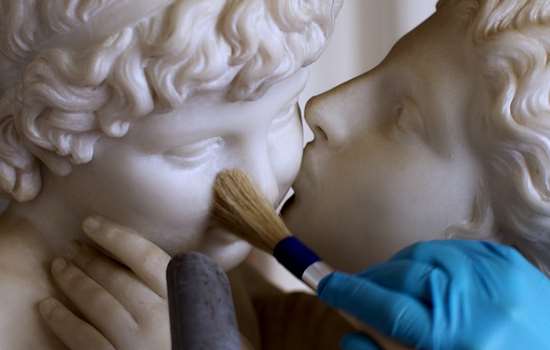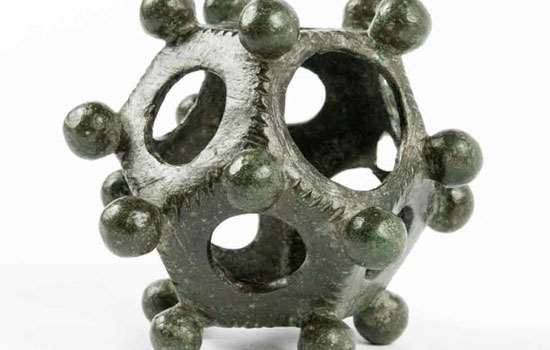ROLE REVERSAL
The tradition of holiday misbehaviour stretches back to the days of ancient Rome and the mid-winter festival of the Saturnalia. Held in honour of the god Saturn, it commenced on 17 December and was accompanied by seven days of merry-making.
Central to the festivities was the reversal of roles and the legitimisation of (moderately) transgressive behaviour: masters waited on their slaves and gambling was widespread.
THE FEAST OF FOOLS
By the early 4th century, Christianity had become the official religion of the Roman Empire. However, the social inversion and general raucousness that defined the Saturnalia continued to find expression in the rituals of the medieval church.
The Feast of Fools was celebrated between 26 and 28 December and involved junior clergy assuming the roles of their superiors. Observance also involved jolly japes, which appear to have been widely indulged.
ILLICIT MIRTH
In 1329 Bishop John Grandisson of Exeter expressed alarm that celebration of the feast of the Holy Innocents (which takes place on 28 December) within his cathedral wasn’t quite up to par. Rather than observing the liturgy with dignity and solemnity, the clergy and choirboys were staging irreverent mimes that descended into mud slinging, causing the congregation to dissolve ‘into disorderly laughter and illicit mirth’.
Offended as the bishop was by such frivolity, Christmas celebrations – both sacred and secular – in medieval and early Tudor England were marked by similar misrule.
BOY BISHOPS
By the 15th century ‘boy bishops’ had become the principal form of status inversion associated with the rituals of the Church. On mid-winter feast days especially associated with children (St Nicholas on 6 December and Holy Innocents on 28 December), a choirboy was elected by his peers to assume the duties of the bishop or abbot.
Clad in a miniature episcopal mitre, boy bishops led processions and even preached sermons. They are documented at cathedrals and numerous abbeys.
TOKEN GESTURE
The great Benedictine monastery at Bury St Edmunds was especially associated with boy bishops. Small lead tokens resembling late medieval coins have been found within the precincts of the abbey and elsewhere, especially in East Anglia.
Some are inscribed with the opening verse of a hymn sung to welcome Henry VI to the abbey at Christmas 1433. The exact purpose of these tokens is open to question but it’s been suggested boy bishops distributed them to children and the poor who then exchanged them for treats at the abbey’s almonry.
THE BEAN KING
There was also inversion of established roles within secular households, extending right up to the royal court. A ‘bean king’ took a leading role in Christmas celebrations during the reigns of Edward II (1307–27) and Edward III (1327–77).
The first Tudor king, Henry VII (1485-1509), revived the tradition, with a Lord of Misrule presiding over festivities during the Twelve Days. Typically a servant or minor court official, the Lord of Misrule’s panoply included a jester and a gibbet for the mock ‘execution’ of those who offended him.
FESTIVE PRANKS
The boisterousness of the Lord of Misrule enabled kings, courtiers and servants alike to let off some steam. Nevertheless, it’s clear that there were limits to how much rowdy behaviour would be tolerated.
At Lincoln’s Inn, London, a Jack Straw (named after one of the leaders of the Peasants’ Revolt in 1381) instigated festive pranks among students at Christmas 1516 that extended to the damage of property. The perpetrators were punished with fines and expulsions, and any recurrence was expressly forbidden. The preservation of established social hierarchies remained important.
THE MASTER OF REVELS
The future Henry VIII spent much of his childhood at Eltham Palace and, after ascending to the throne in 1509, he frequently spent Christmas there.
Celebration of Twelfth Night, the culmination of the Christmas holiday, in 1516 involved a sumptuous feast, an elaborate pageant and a rambunctious mock battle, all under the direction of a Master of Revels.
MAD FRIDAY
The Reformation of the mid-16th century brought the appointment of boy bishops to an end and the all-too-real disorder of the Civil Wars a century later was the death knell for festive misrule in secular households and educational establishments.
However, as anyone who has witnessed Mad Friday – the hedonistic frolics that accompany the weekend before Christmas – can testify, misrule remains an integral part of contemporary mid-winter festivities.
THE HISTORY OF CHRISTMAS
Read our guide to discover how the festive period has been celebrated through the ages, from prehistory to the Victorian era – and discover the Victorians’ role in establishing many of the traditions that we take for granted today.
Read MoreGo Behind the scenes
-

Behind the Scenes at Osborne
Watch our video to find out what happens in preperation for the season at Queen Victoria's seaside retreat.
-

8 Interesting objects
Find out about 8 of the most fascinating objects in the English Heritage collection.
-

The new bridge at Tintagel
Go behind the scenes and learn about the making of Tintagel's spectacular new bridge.
